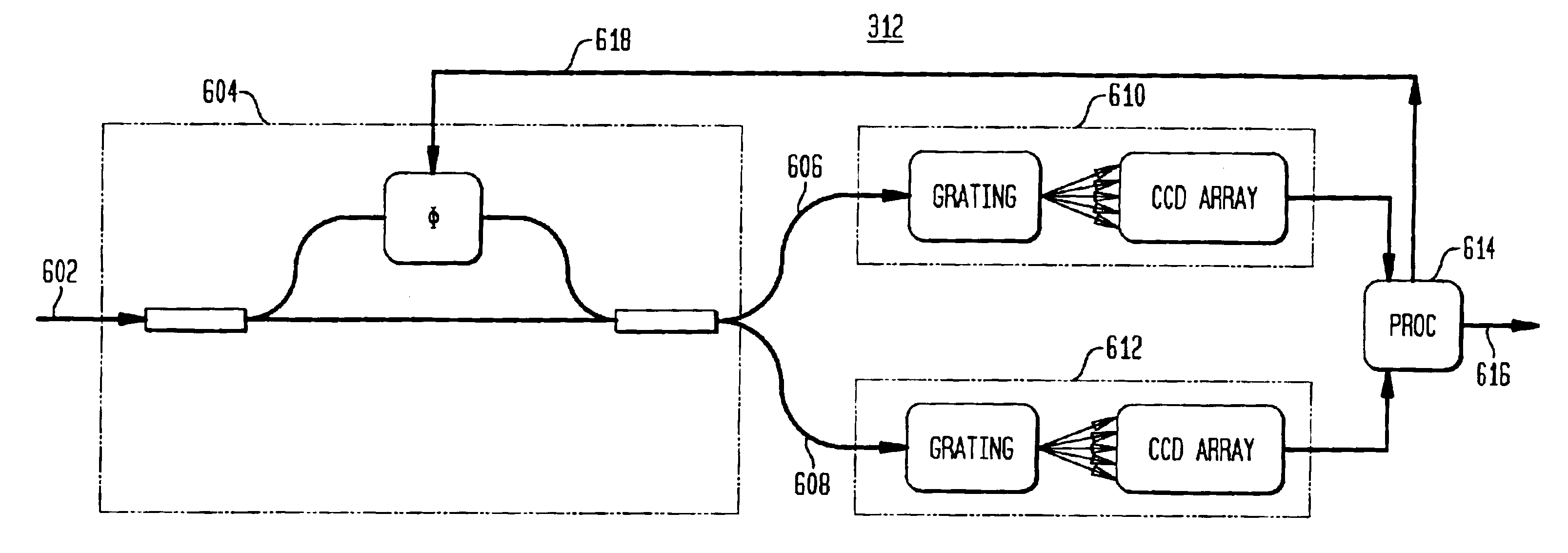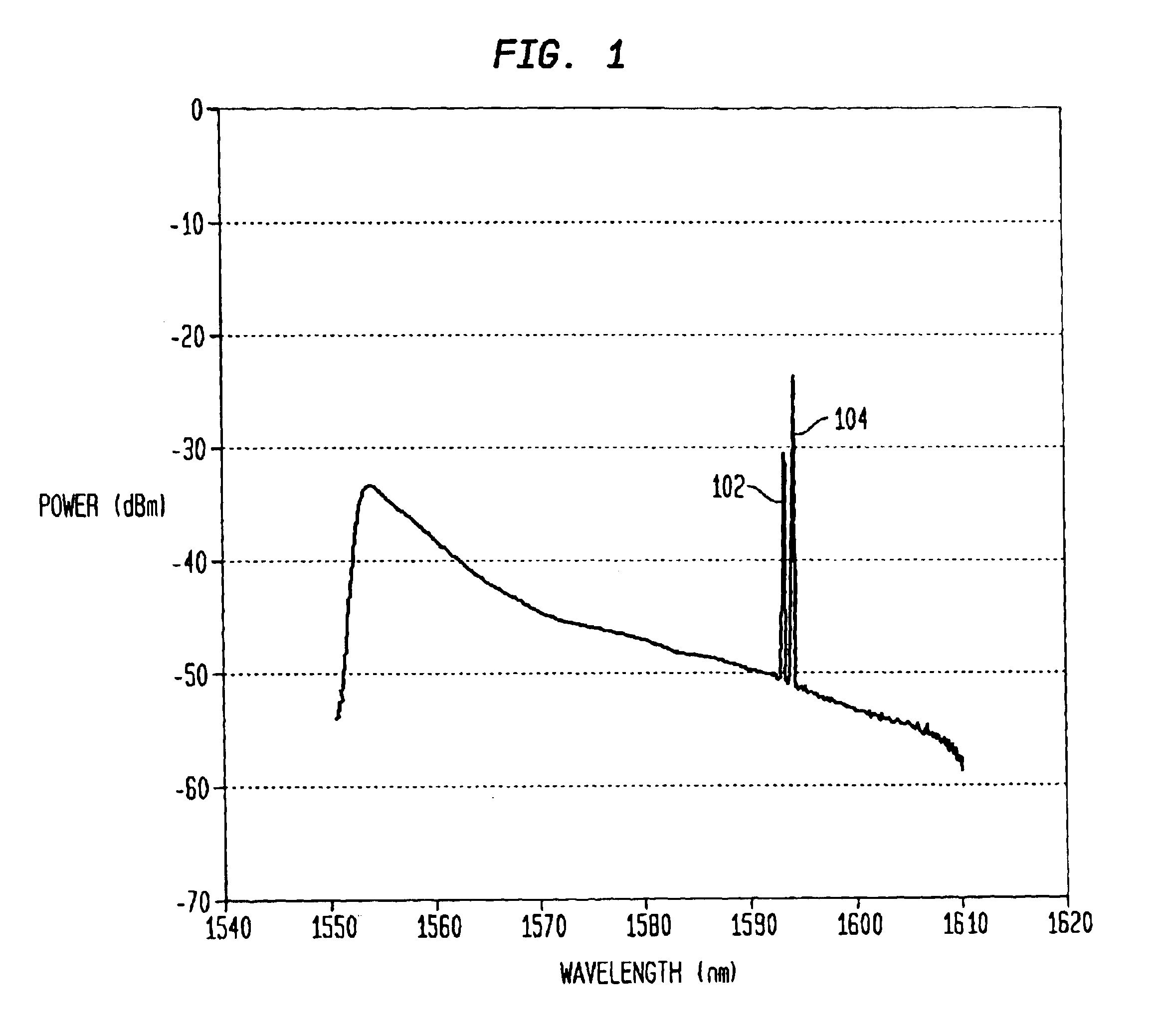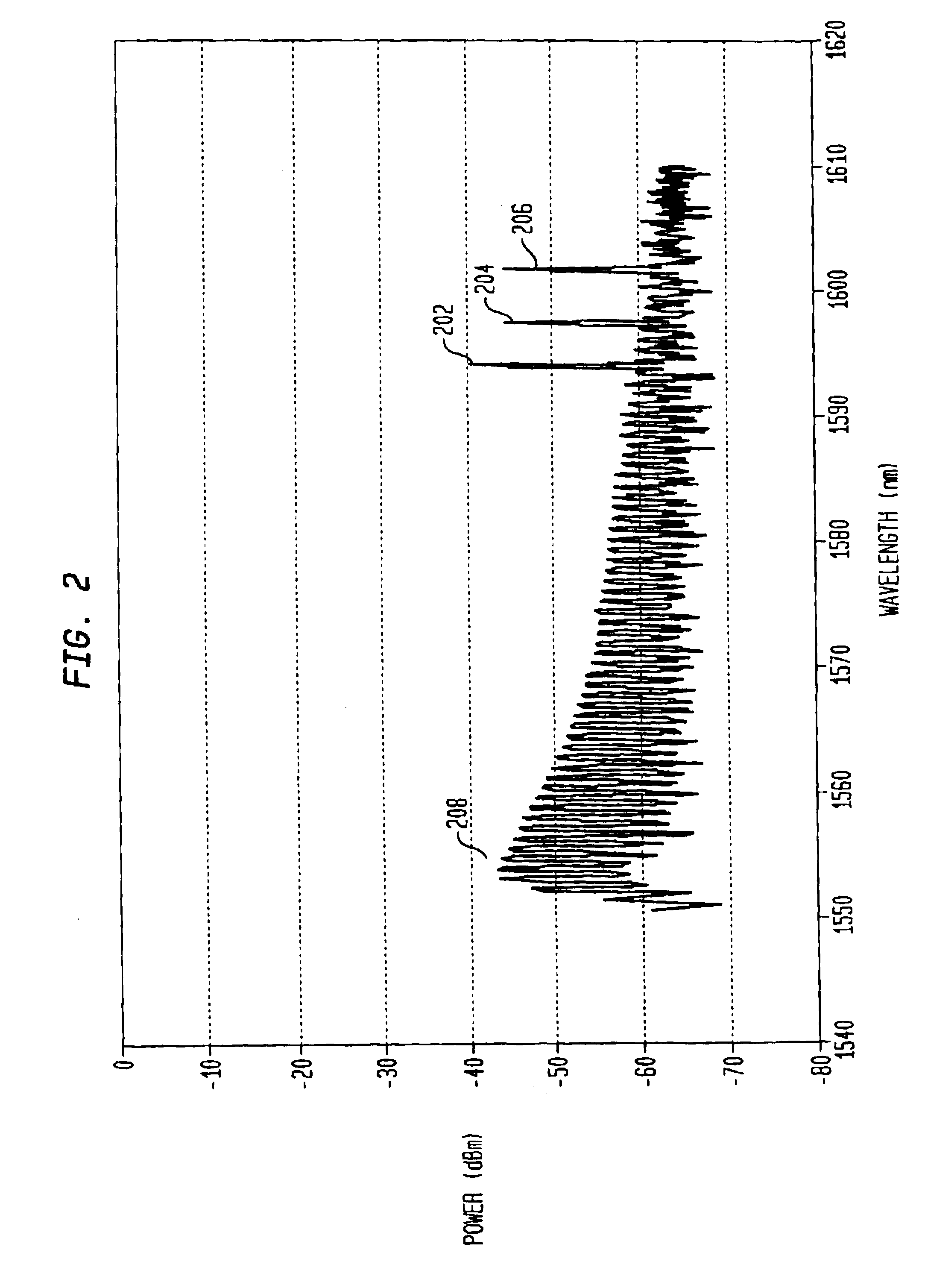DWDM channel detection system
a detection system and channel technology, applied in the field of optical communication, can solve the problem that channels that conform to this grid experience a high degree of constructive interferen
- Summary
- Abstract
- Description
- Claims
- Application Information
AI Technical Summary
Benefits of technology
Problems solved by technology
Method used
Image
Examples
Embodiment Construction
[0020]Reference herein to “one embodiment” or “an embodiment” means that a particular feature, structure, or characteristic described in connection with the embodiment can be included in at least one embodiment of the invention. The appearances of the phrase “in one embodiment” in various places in the specification are not necessarily all referring to the same embodiment, nor are separate or alternative embodiments mutually exclusive of other embodiments.
[0021]DWDM System
[0022]FIG. 3 is a block diagram of a dense wave-division multiplexing (DWDM) optical communications system 302 according to one embodiment of this invention. System 302 includes start terminal 304, end terminal 306, intervening repeaters 308, and optical add-drop multiplexers (OADMs) 310 interconnected by fiber optic links. System 302 also includes optical monitors (OMONs) 312, each of which monitors the output of a repeater or OADM by tapping a small amount of power from its fiber optic output. Each OMON 312 also ...
PUM
 Login to View More
Login to View More Abstract
Description
Claims
Application Information
 Login to View More
Login to View More - R&D
- Intellectual Property
- Life Sciences
- Materials
- Tech Scout
- Unparalleled Data Quality
- Higher Quality Content
- 60% Fewer Hallucinations
Browse by: Latest US Patents, China's latest patents, Technical Efficacy Thesaurus, Application Domain, Technology Topic, Popular Technical Reports.
© 2025 PatSnap. All rights reserved.Legal|Privacy policy|Modern Slavery Act Transparency Statement|Sitemap|About US| Contact US: help@patsnap.com



